Specimen doesn't exist or is not currently viewable
Fossil & Mineral Articles
A list of all educational articles on fossil and mineral topics ordered by the date that they are published.

Fossils & Fossil Sites
An index of articles related to fossils, fossil collecting and locations where fossils are found.

Gems & Minerals
An index of articles related to gems, minerals and crystals by FossilEra.
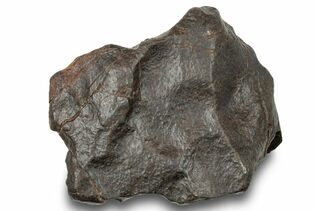
Meteorites
An index of articles on meteorites, tektites and space rocks.

Prehistoric Creatures
An index of articles on prehistoric creatures from Dinosaurs to Trilobites.
Latest Articles

How Are Fossils Dated?
So, how do we know how old a fossil is? There are two main types of fossil dating, relative dating and absolute dating.

Wulfenite: One of Nature’s Most Striking Lead Minerals
Learn about wulfenite—its formation, crystal structure, vibrant colors, famous localities, and commonly associated minerals.

Are Serpentine and Jade the Same Mineral?

Serpentine: Formation, Varieties & History
A comprehensive guide to serpentine: how it forms deep in Earth, main mineral types, global occurrences, and its historical and decorative uses.

Rhodonite: A Deep Dive into the Rose-Colored Mineral
Learn about rhodonite’s formation, history, types, uses, and famous localities in this in-depth guide to the world’s most iconic pink manganese mineral.

Chinese Writing Stone - About This Geological Calligraphy
Explore the geology, history, and origins of Chinese Writing Stone, the striking patterned rock known for its script-like mineral inclusions.

Andradite: The Garnet Family’s Colorful Chameleon
Discover andradite garnet: its colors, varieties, formation, history, uses, and the world’s top localities for this rare and dazzling mineral.

Rainbow Garnets: Nature’s Fireworks Trapped in Stone
earn about iridescent rainbow garnets—the rare garnets that display vivid natural color flashes. Discover how they form, where they’re found, and what makes them so prized.

Striped Flint: A Polish Geological Teasure
Polish striped flint blends stunning natural banding, Jurassic origins, and 6,000 years of human craftsmanship—discover its geology, rarity, and rich mining history.

Vanadinite – Nature’s Fiery Red Lead Mineral
Explore vanadinite’s brilliant red crystals, unique chemistry, and fascinating journey from “brown lead” to a collector favorite.

Dioptase – Nature’s Emerald Made of Copper
Dioptase: Discover the vivid emerald-green copper mineral prized for its rarity, history, and stunning crystals formed in the oxidized zones of ancient copper deposits.

Uvarovite - The Green Jewel of the Garnet Family
Learn what makes uvarovite the rarest green garnet, from its chromium-rich color to its scarce deposits and sparkling crystal druses.

Nanotyrannus Returns: New Research Proves It Wasn’t a Baby T. rex
A major 2025 study reveals Nanotyrannus was never a young T. rex but a separate species, transforming the story of Hell Creek’s top predators.
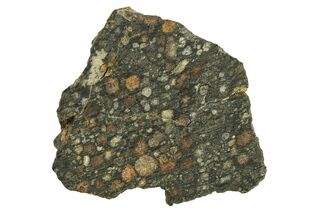
Carbonaceous Chondrites: A Window into the Early Solar System
Discover the origins, types, and unique features of carbonaceous chondrites—rare meteorites rich in organic compounds, water, and insights into the early solar system.

12 Massive Meteorite Impact Craters
Explore 12 of the world's most famous meteorite impact craters, from ancient sites to well-preserved formations, each telling a story of cosmic collisions.

Meteorites That Hit Buildings, Cars & People
Explore astonishing stories of meteorites striking buildings, cars, and even people. Discover rare cosmic impacts that brought pieces of space down to Earth.
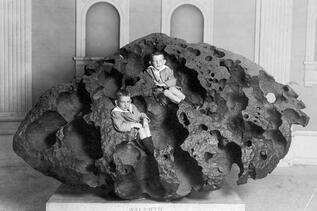
Top 11 Famous Meteorites
Meteorites have fascinated humanity for centuries, herewe look at some of the most famous meteorites that have left an indelible mark on science, history, and popular culture.

Banded Iron Formations (BIF): Ancient Records of Earth's Atmosphere
Banded Iron Formations, or BIFs, are one of Earth's oldest and most intriguing geological records, providing a fascinating window into the planet’s early atmosphere, oceans, and the dawn of life.
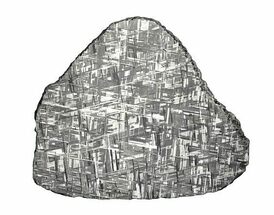
Meteorites - Widmanstätten Patterns and Neumann Lines
Widmanstätten patterns are distinctive, interlocking patterns of crystals that can be observed on the polished surfaces of iron meteorites.

Dig Your Own Fossil Fish In Wyoming - Fossil Lake Safari
Discover your own 50 million year old fossils near Kemmerer, Wyoming at the Fossil Lake Safari. Best of all, you get to keep what you find!

Where To Hunt Fossils? Fossil Parks & Pay-Per-Dig Quarries
Fossils are nice to see in museums and national parks, but have you ever wanted to try your hand finding them yourself? Fossil Parks and Pay per Dig Quarries are a great place to start!

Meteorites, Meteors and Asteroids. What Is The Difference?
Meteorites, meteors, and asteroids are related celestial objects. The main difference lies in their location and stage of existence.
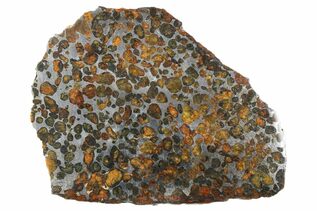
How Are Pallasite Meteorites Formed?
Pallasite meteorites are thought to form at the boundary regions between the metal cores and silicate mantles of certain early planetary bodies or asteroids.
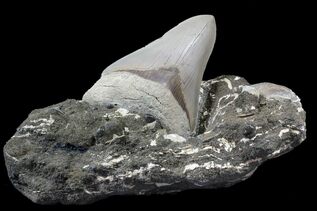
Why Did The Megalodon Shark Go Extinct?
The Megalodon Shark (Otodus megalodon) is quite possibly one of the most famous prehistoric animals that ever lived, aside from the dinosaurs. But where did it go and why?
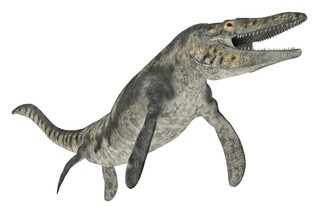
How Large Did Mosasaurs Get?
Mosasaurus hoffmanni, the largest known Mosasaur, averaged 39-42 feet long as adults and may have reached lengths up to 57 feet. Even the smallest of their number was about a meter, the same size as many small shark species.
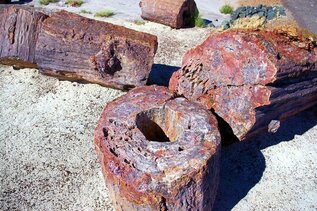
Petrification vs Fossilization: What Is The Difference?
Petrification is the geological process in which organic material is turned to stone slowly over time. This process is involved in many forms of fossilization, and leaves behind many stunning and beautifully preserved fossils.

Giganotosaurus: Cretaceous Terror Of Argentina
Giganotosaurus carolinii (commonly misspelled as “Gigantosaurus”) was a giant theropod dinosaur from the Cenomanian stage of the Late Cretaceous period, about 100-97 million years ago.
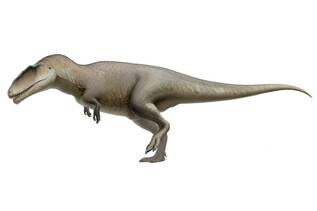
Carcharodontosaurus: A Theropod Dinosaur Bigger Than T-Rex
Carcharodontosaurus was a massive theropod dinosaur that roamed what is now Northern Africa, some 90 million years ago. It is one of the largest predatory dinosaurs known even larger than Tyrannosaurus Rex.
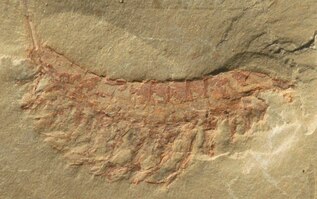
Just What Is A Lagerstätte?
A lagerstätte (german for “storage place”) in paleontological terms is a site of exceptional fossilization, in which soft tissue preservation and other highly detailed remains can be retained and recovered.
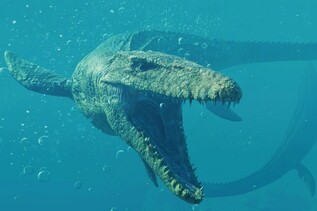
The Dinosaurs That Never Were: Prehistoric Impostors
The paleontologically focused media revolves around dinosaurs, so it's not surprising that most news about fossils will go to great lengths to connect discoveries to the mesozoic era’s most famous residents, even tangentially.

What Is A Tektite?
Put simply, tektites are a form of natural glass that was formed via high velocity and extreme heat. The easiest way to satisfy these conditions is through extraterrestrial impact.
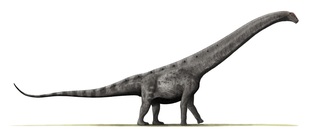
The Largest Prehistoric Animals
The largest prehistoric animals chronicled in stone from dinosaurs to the largest sea scorpions.

Kem Kem Group History, Paleoecology, and Importance
The Kem Kem group is best known from an escarpment of rock on the Morocco-Algerian border in Northern Africa, in what is now the Kem Kem region of modern day Morocco. The Kem Kem group layers date back to the Cenomanian age of the Late Cretaceous period.
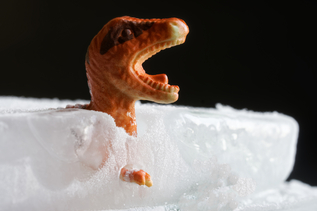
Dinosaurs: Cold-Blooded Or Warm-Blooded?
Since their initial discovery, dinosaurs have had many mysteries surrounding their existence. One of the larger, were dinosaurs warm-blooded, like active birds and mammals, or were they cold-blooded, like modern reptiles?
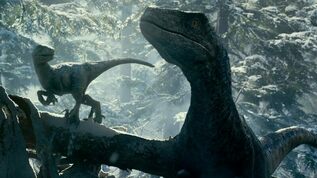
Dinosaurs In The Snow, What Are The Facts?
Perhaps some of the best evidence for some dinosaurs inhabiting wintry wonderlands is their presence in polar regions. Particularly, southwest Australia, New Zealand, Alaska, and Antarctica.

Ammolite Announced As Alberta's Official Gemstone
As of Thursday, the 17th of March, Alberta’s government announced plans to name ammolite as the official gemstone of the province. This revelation should surprise no one, as Alberta has become nearly synonymous with the iridescent, fossil ammonite shell.
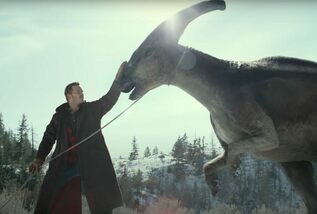
Dinosaurs Set To Appear In Jurassic World: Dominion
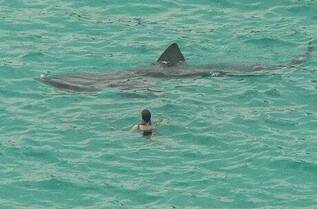
Is The Megalodon Still Alive?
In spite of the abundance of evidence that indicates the extinction of the last of the megatooth sharks, there is still a small but vocal holdout of people who believe that the monster shark still lives

Megalodon Tooth Buyers Guide
Ever wanted to own a real, fossil tooth from a Megalodon shark? This buyers guide help you decide what to buy.
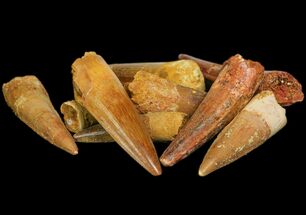
Spinosaurus Tooth Buyers Guide
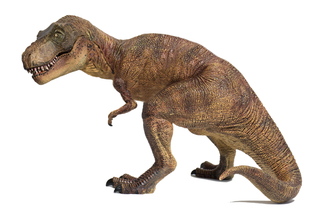
The Ultimate Guide To Tyrannosaurs

Was Spinosaurus Bigger Than T-Rex?
To put it bluntly, in terms of sheer length and height, Spinosaurus takes the crown handily but weight is a trickier question.
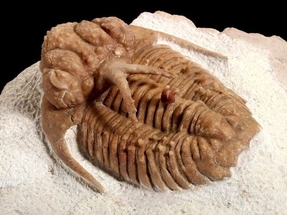
What is a Trilobite?
Learn about trilobites. Trilobites were an extinct marine arthropod that lived during the Paleozoic era.

About Spinosaurus
Spinosaurus was the largest known meat-eating dinosaur and also the first known semi-aquatic dinosaur.
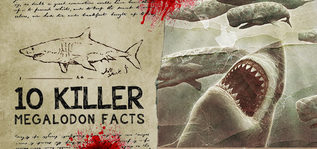
10 Killer Megalodon Shark Facts
Fact #1. The megalodon shark was the largest shark that ever lived, estimated to have reached up to 60 feet in length.
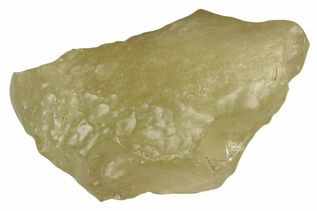
Libyan Desert Glass: The Saharan Treasure With Interstellar Origins
Since its official discovery in 1932, scientists have always been fascinated by Libyan Desert Glass, an impactite that should have rather straightforward origins.
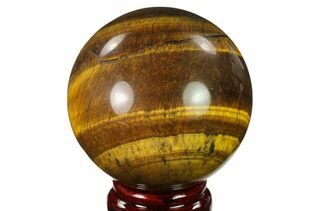
How Is Tiger's Eye Formed?
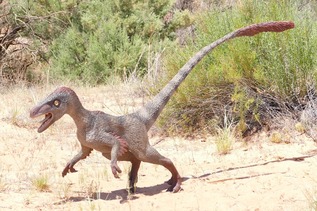
What Is A Raptor (Dinosaur)?
"Raptor" is a non-scientific term popularized by the Jurassic Park movie franchise. It is generally used to refer to small to medium sized, bird-like dinosaurs.
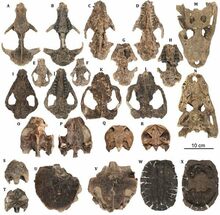
Top 10 Paleontology News Stories Of 2019
There were a lot of interesting fossil discoveries made in 2019, here are some of the most important and spectacular.
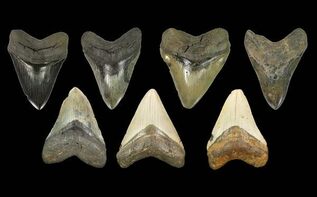
Why Do Fossils Come In So Many Colors?
Fossils have a wide array of colors not due to the original color of the organism, but because of the complicated mineralization process.
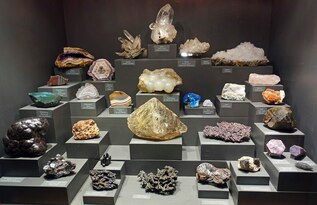
Minerals, Crystals, Rocks & Stones: What’s The Difference?

What Is The Largest Ammonite Ever Found?
The largest ammonite fossil that has been found was 1.8 meters (5.9 feet) across, but it’s living chamber was incomplete. It is of the species Parapuzosia seppenradensis and was found near Westphalia, Germany in 1895.

Does Rose Quartz Form Crystals?
Rose quartz is a pink colored variety of quartz that is coarsely crystalline. It is found only in a massive state and does not form individual crystals with external faces.

What are agatized fossils?
The term “agatized” is generally used to describe a fossil that has been replaced with chalcedony, a microcrystalline form of quartz.

Purple Crystals & Stones
Outside of amethyst and fluorite, purple is one of the rarer colors in the mineral world.

South Dakota State Fossil - Triceratops Horridus
In 1988, the South Dakota state legislature designated the dinosaur Triceratops horridus as their state fossil.
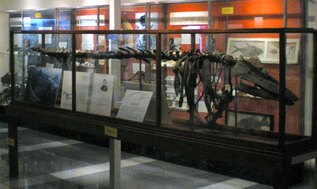
Vermont State Fossil - Mount Holly Mammoth & Charlotte Whale
Vermont was two designated state fossils, the Mount Holly Mammoth and the Charlotte Whale.

Virginia State Fossil - Scallop (Chesapecten jeffersonius)
In 1993, the Virginia state legislature designated the fossil scallop (Chesapecten jeffersonius) as the Virginia state fossil.
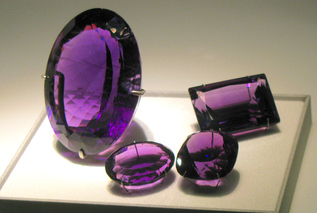
What Is Amethyst Worth? Amethyst Price & Valuation
Up until the discovery of large amethyst deposits in Brazil during the early 19th century, amethyst was considered a precious gemstone comparable to diamonds, rubies, sapphires and emeralds.
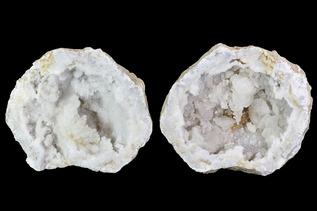
How Do Geodes Form?

What is the largest geode in the world?
Two geodes geodes are claimed to be the largest in the world, the Pulpi Geode in Spain and Ohio's celestite crystal cave.
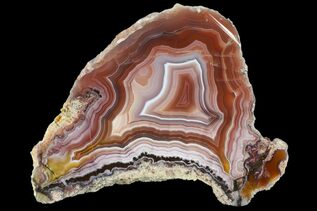
Agate, Chalcedony & Jasper - What’s the Difference?
Chalcedony is a broad term to describe a microcrystalline form of silica. Agate is any type of chalcedony which is translucent, while jasper is any type of chalcedony which is opaque.

The Evolution Of Fish
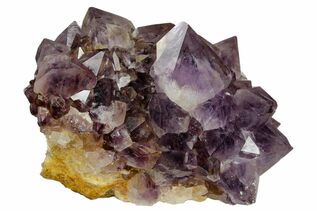
Is Amethyst Quartz?
Yes, amethyst is a purple variety of quartz which owes its color to a combination of trace amounts of iron in the quartz and that has been naturally irradiated.

Maine State Fossil - Pertica Quadrifaria
In 1985 the Maine state legislature designated the Middle Devonian vascular plant, Pertica Quadrifaria as the Maine state fossil.
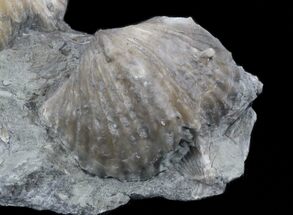
Kentucky State Fossil - The Brachiopod
In 1986 the Kentucky state legislature designated the brachiopod as the Kentucky state fossil. Brachiopods are small, filter-feeding marine organisms that superficially look like clams.
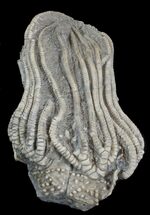
Indiana State Fossil - None, Crinoid (Elegantocrinus) Proposed
Indiana currently does not have an official state fossil, though the crinoid (Elegantocrinus hemisphaericus) was proposed in 2015.
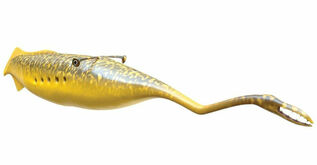
Illinois State Fossil - Tully Monster (Tullimonstrum gregarium)
In 1989 the Illinois state legislature designated the Tully Monster (Tullimonstrum gregarium) as the Illinois state fossil.
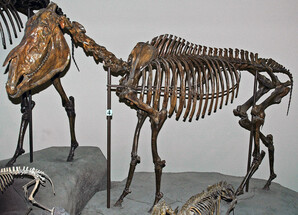
Idaho State Fossil - Hagerman Horse (Equus simplicidens)
In 1988 the Idaho state legislature designated the Hagerman Horse (Equus simplicidens) as the Idaho state fossil.

Maryland State Fossil - Gastropod (Ecphora gardnerae)
In 1994 the Maryland state legislature designated the Gastropod (Ecphora gardnerae gardnerae) as the Maryland state fossil.

Connecticut State Fossil - Dinosaur Tracks (Eubrontes giganteus)
In 1991 the Connecticut state legislature designated fossil, theropod dinosaur tracks found in the Connecticut Valley as their state fossil.

West Virginia State Fossil - Giant Ground Sloth (Megalonyx)
In 2008 the West Virginia state legislature designated the giant ground sloth (Megalonyx jeffersonnii) as the West Virginia state fossil.

Wisconsin State Fossil - Trilobite (Calymene Celebra)
In 1985 the Utah state legislature designated fossils of Calymene celebra, a type of trilobite as the Wisconsin state fossil.

Utah State Fossil - Allosaurus
In 1988 the Utah state legislature designated Allosaurus as the Utah state fossil. In addition the Utahraptor was designated as the official state dinosaur in 2018.

Did Dinosaurs Have Two Brains? The Myth Of The Butt Brain
A large, hollow cavity in the rear end of some dinosaurs has been postulated to contain a second brain. But, is this just a myth?
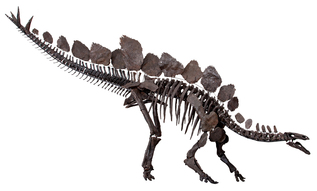
Colorado State Fossil - Stegosaurus
In 1982 the Colorado state legislature designated the fossils of Stegosaurus as the Colorado state fossil.

Oregon State Fossil - Dawn Redwood (Metasequoia)
In 2005 the Oregon state legislature adopted the fossils of the dawn redwood or Metasequoia as the Oregon state fossil.
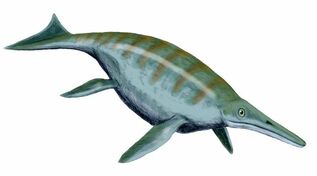
Nevada State Fossil - Ichthyosaur (Shonisaurus popularis)
In 1977 the Nevada state legislature designated the ichthyosaur fossils as the Nevada state fossil. In 1989 this designation was amended to specifically be the fossils of Shonisaurus popularis.
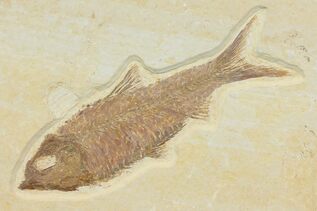
Wyoming State Fossil - Fossil Fish (Knightia)
In 1987 the Wyoming state legislature designated the small fossil fish Knightia as the Wyoming state fossil. In addition, in 1994 Triceratops was adopted as the Wyoming state dinosaur.
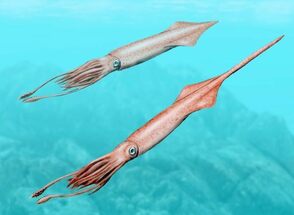
Delaware State Fossil - Belemnite (Belemnitella americana)
In 1996 the Delaware state legislature designated fossil belemnites (Belemnitella americana) as the Delaware state fossil.

New Fossil Discovery Shows The Rapid Rise Of Mammals After KT Extinction
The Denver Museum Of Nature and Science has announced a significant, new fossil discovery documenting the rapid rise of mammals after the KT extinction event which killed over 75% of life on earth.

California State Fossil - Saber-Tooth Tiger (Smilodon californicus)
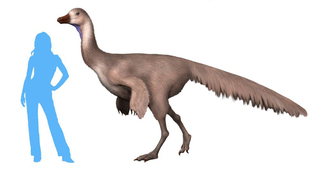
Arkansas State Fossil - Arkansaurus
While Arkansas does not officially have a state fossil it does have a state dinosaur. Arkansaurus was designated as the state dinosaur in 2017.
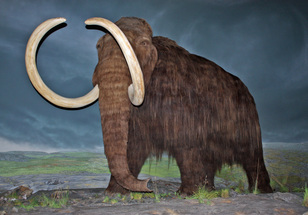
Alaska State Fossil - Woolly Mammoth
In 1986 the Alaska state legislature officially designated the Woolly Mammoth (Mammuthus primigenius) as the Alaska state fossil.
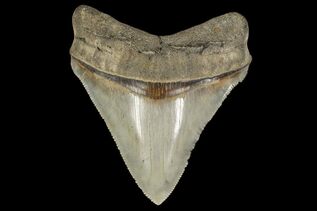
Georgia State Fossil - Fossil Shark Teeth
In 1976 the Georgia state legislature designated the fossil shark tooth as the Georgia state fossil.

About Basilosaurs
Basilosaurs are a family of extinct, primitive whales of the early to middle eocene. As whales early ancestors left the land in favor of the sea, it is likely that these were the first fully aquatic whale.
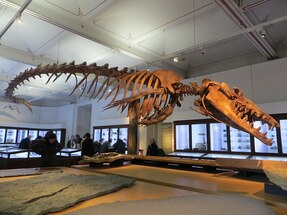
Alabama State Fossil - Basilosaurus
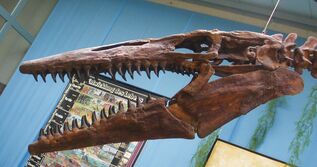
Kansas State Fossil - Tylosaurus & Pteranodon
In 2014 the Kansas state legislature designated the fossils of Tylosaurus and a Pteranodon as the official Kansas state fossils.
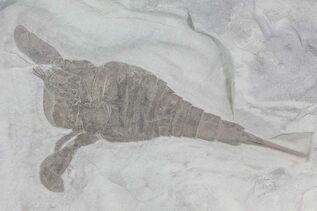
New York State Fossil - Sea Scorpion (Eurypterus remipes)
In 1984 the New York state legislature designated Eurypterus remipes a type of Eurypterid, more commonly known as a sea scorpion as the New York state fossil.

North Dakota State Fossil - Teredo Petrified Wood
In 1967 the North Dakota state legislature designated teredo petrified wood as the North Dakota state fossils.
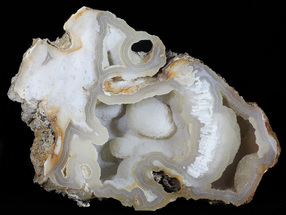
Florida State Fossil - Agate Replaced Fossil Coral
In 1979 the Florida state legislature designated the agatized, fossil coral found in the Northwestern part of the state as the state stone.

Texas State Fossil(s) - Petrified Palmwood & Paluxysaurus
Texas is one of the few states that have multiple state fossils by way of having a state stone which is also a fossil as well as a state dinosaur.
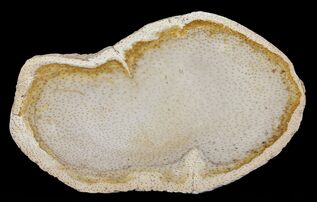
Louisiana State Fossil - Petrified Palmwood (Palmoxylon)
In 1976 the Louisiana state legislature officially designated petrified palm wood of the genus Palmoxylon as the Louisiana state fossil.

Celestite: The Sky-Blue Mineral of Ancient Seas
Celestite is a strontium based mineral that frequently has a deep, sky-blue coloration. It tends to form attractive, well-shaped crystals often found inside of geodes.
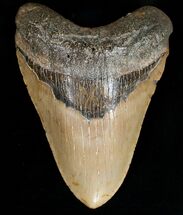
North Carolina State Fossil - Megalodon Shark Tooth
In 2013 the North Carolina state legislature officially designated the fossil teeth of the prehistoric Megalodon shark as the North Carolina state fossil.
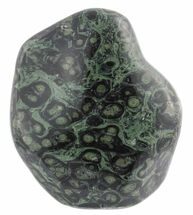
Is Kambaba Jasper A Stromatolite?
Kambaba jasper is a greenish stone full of black orbs that superficially resembles fossil stromatolites. But, is it one?
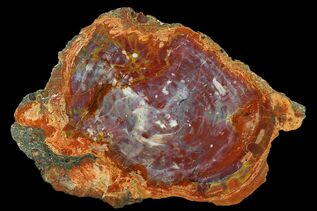
Arizona State Fossil - Petrified Wood (Araucarioxylon)
In 1988 the Arizona state legislature designated the petrified wood of Araucarioxylon arizonicum, a prehistoric conifer as the Arizona state fossil.
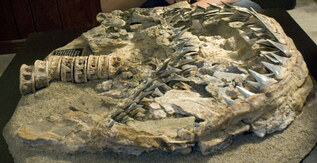
Megalodon Myth: The Megalodon And Great White Shark Are Closely Related
The Great White Shark being a descendant of or closely related to the Megalodon might be the most commonly repeated misconception about the prehistoric shark.

What Did The Megalodon Shark Eat?
As the joke would go, it was a 60 foot shark, it could eat whatever it wanted. But, what does the fossil record show that the Megalodon really ate?
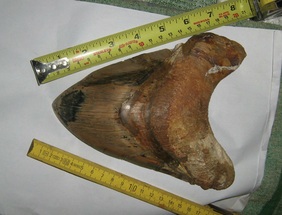
What is the largest Megalodon tooth ever found?
Very few Megalodon teeth have ever been found exceeding 7 inches. The largest that can be verified is a 7.48 inch monster from Peru.
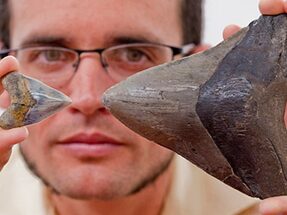
Megalodon Shark Nursery Found in Panama
Researchers from the University of Florida have announced the discovery of a 10 million year old Megalodon nursery area located in Panama.
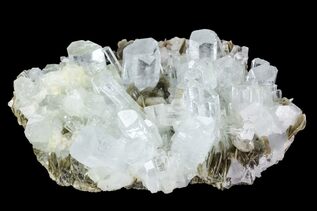
About Minerals & Crystals
Minerals are the building blocks of almost everything earth and crystals are some of nature's most spectacular wonders. But, how do they form.

10 Most Popular Crystals
Crystals are very trendy right now. We've created a list of some of the most popular and colorful ones.
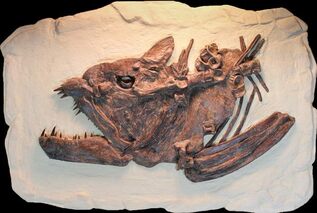
Xiphactinus, Terror Of The Inland Seaway
Learn about Xiphactinus, one of the largest bony fish that ever lived that terrorized the inland seaways of the United States during the Cretaceous period.
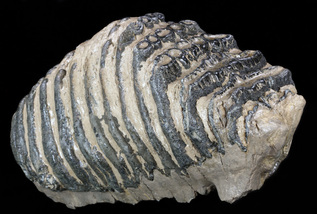
About Mammoth Molars
Learn about mammoth molars/teeth including identifying growth stages, placement in the jaw and species.

Buyer Beware: Fake Mosasaurus Jaws
The problem of faked and forged fossils is an ongoing issue and fake Mosasaurus jaws are one of the most prevalent examples.
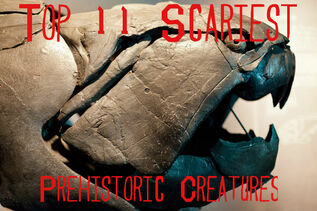
Top 11 Scariest Prehistoric Animals
Counting down the top 11 scariest prehistoric animals of all time. Dunkleosteus, Smilodon, Megalodon...
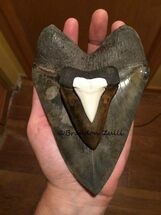
Megalodon Vs. Great White Tooth Size
A size comparison between teeth of the extinct Megalodon and today's Great White shark.

Megalodon vs Mosasaurus: Who would win?
Who would win in a hypothetical battle to the death between two of the top marine predators of all time. The Megalodon and the Mosasaurus.
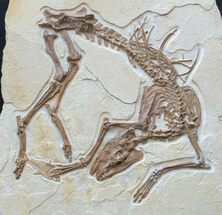
New Fossil Discovery - “Olive” A Primitive Horse Ancestor From The Green River Formation
In the spring of 2015 the Eocene aged Green River Formation near Kemmerer, Wyoming yielded another amazing fossil discovery. A fully articulated primitive horse ancestor, since nicknamed “Olive”.
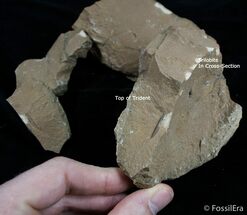
What An Unprepared Spiny Trilobite Looks Like
Some of the most impressive trilobites in the world are the exquisitely preserved spiny ones from Morocco? But what do they look like before preparation?
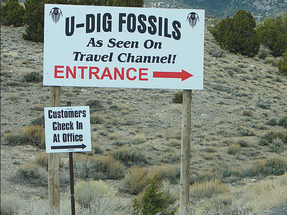
Trip Report: U-Dig Trilobite Quarry – March, 2014
I made a stop by the famous U-Dig trilobite quarry in March. Here's details of my day of collecting there.

Triceratops Tooth Buyers Guide
The horned Triceratops may be one of the most iconic dinosaurs in the world. Fossilized teeth of this dinosaur are also relatively affordable fossils to purchase.
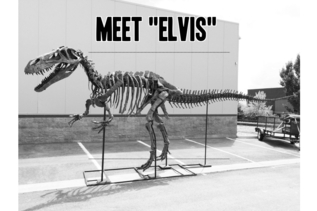
Torvosaurus – King of the Real Jurassic World Unearthed
The recent discovery of the first nearly complete Torvosaurus in Colorado has unveiled the ruler of the real Jurassic World.

Newly Described Dakotaraptor: A Giant Raptor From The Hell Creek Formation
The discovery of the first giant, featured raptor (Dromaeosaur) from the Hell Creek Formation of South Dakota has been announced.
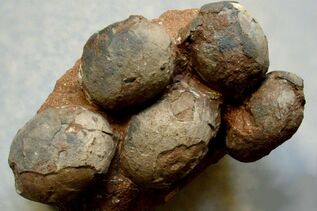
Do you sell dinosaur eggs?
Do you sell dinosaur eggs is a question I'm received many times recently here's the long explanation.
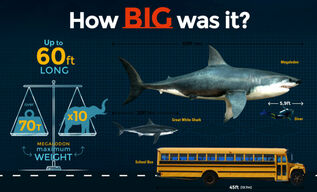
Megalodon Size: How Big Was The Megalodon Shark?
Most current, scientifically accepted estimates for the Megalodon's maximum size fall into the 60-70 foot range, with a weight of 50-70 tons.
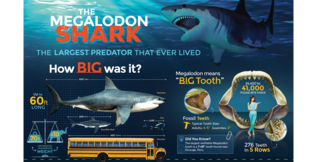
Megalodon Shark Infographic
Learn about the biggest and most bad-ass predator to ever inhabit earth's oceans, the 60 foot Megalodon Shark!
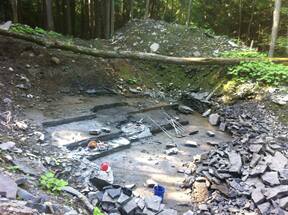
Trip Report: Walcott-Rust Quarry Trilobites – August, 2013
In summer of 2013 I got the opportunity to collect trilobites at the famous Walcott-Rust Quarry in NY.
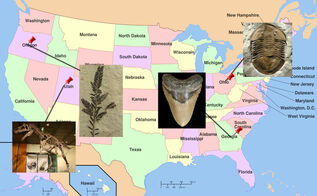
List of State Fossils
A current list of the official state fossil designations by state with information and photos.

Fossils - What is a Fossil?
A fossil is the preserved remains or traces of organisms (plants, animals, etc) that lived in the distant past. Learn more about fossils...
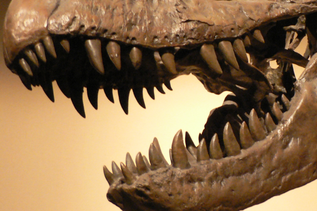
About Dinosaur Teeth
Learn about dinosaur teeth. Why do different dinosaurs have vastly different looking teeth? Which dinosaurs have the largest and smallest teeth?

Trip Report: Collecting Oklahoma Trilobites – April, 2013
Trip report for collecting Devonian trilobites from the Haragan Formation of Oklahoma in April, 2013

About Crinoids
Learn about crinoids. Crinoids are an echinoderm related to starfish, sea urchins, and brittle stars.
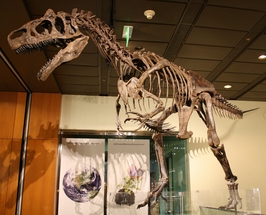
About Allosaurus
Learn about Allosaurus. Allosaurus was one of the most fearsome predatory dinosaurs in the Jurassic Period.
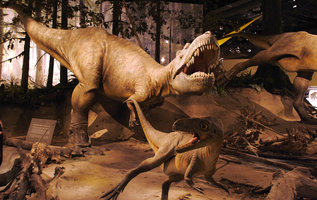
About Albertosaurus
Learn about the tyrannosaurid Albertosaurus. Albertosaurus was a large theropod from the Late Cretaceous. It is famously found in the dinosaur-rich, Horseshoe Canyon Formation of Alberta, Canada.

Mosasaurs
Mosasaurs are very large extinct marine reptiles with some species reaching lengths of over 50 feet and are considered to be some of the fearsome predators to ever inhabit our oceans.
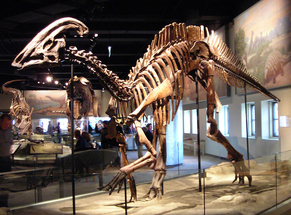
About Hadrosaurs
Learn about Hadrosaurs, commonly referred to as a duck-billed dinosaur. FossilEra also has quality hadrosaur fossils for sale.

Utaspis Trilobite Preparation Sequence
Preparation photos of a great Utaspsis marjumensis trilobite collected in the spring of 2013.

About Triceratops
The horned Triceratops is one of the most recognizable of all dinosaurs. Find out more...

About Ammonites
Ammonite facts and ammonites fossils for sale. Ammonites were prehistoric, coiled cephalopods whose fossils are found worldwide.
 Reviews
Reviews